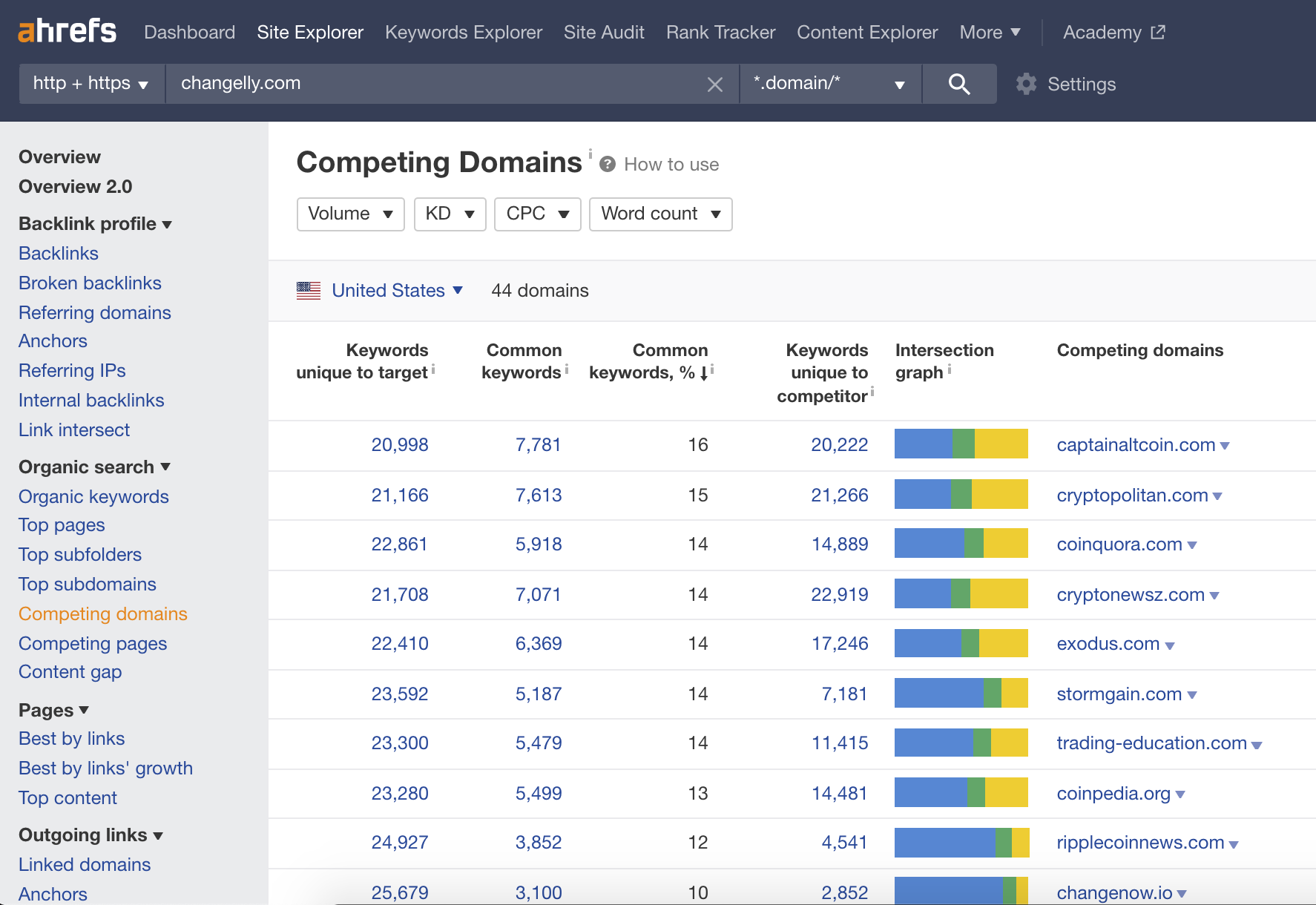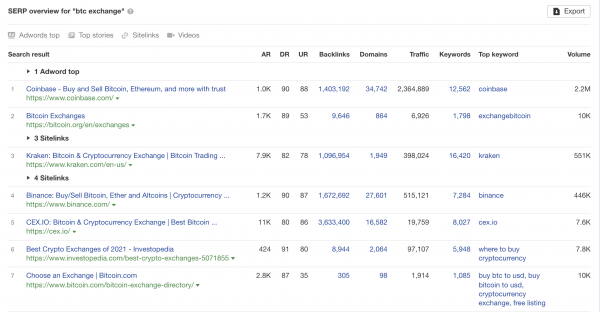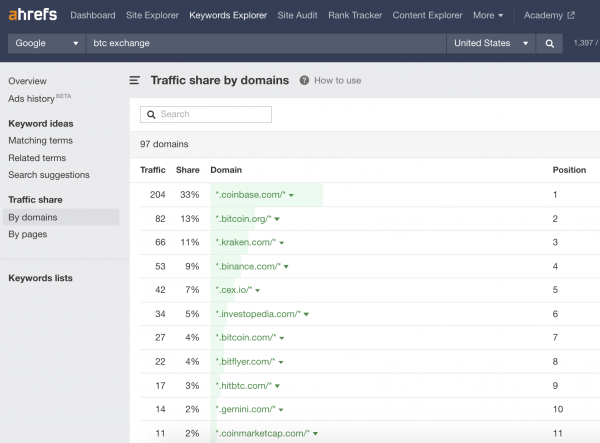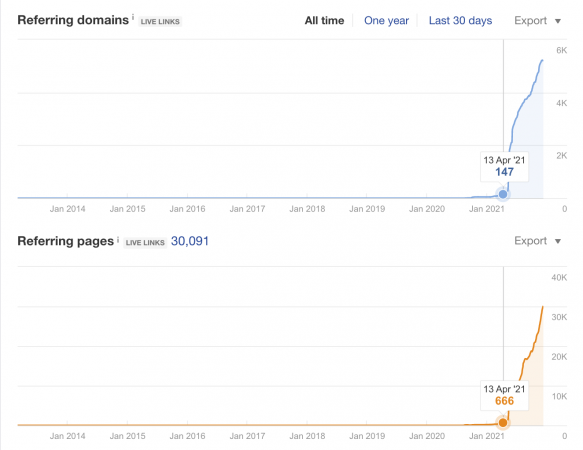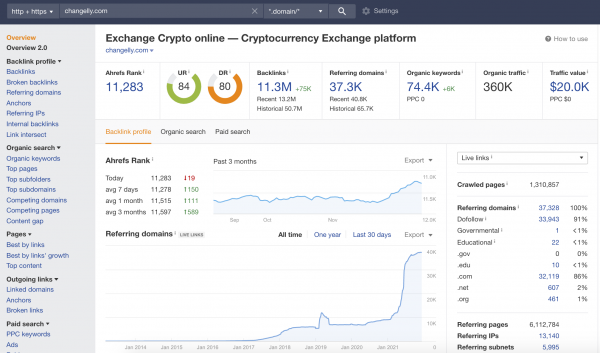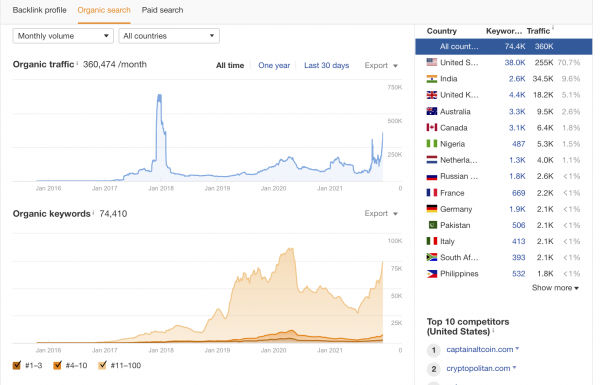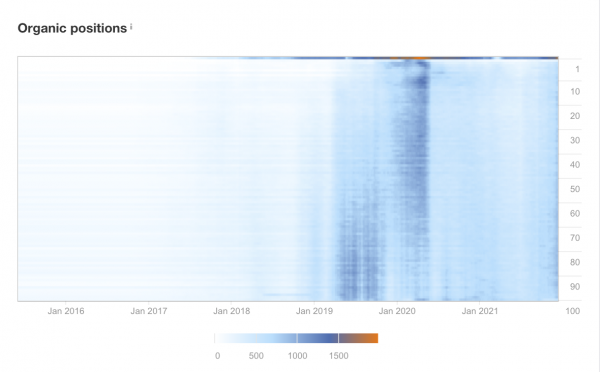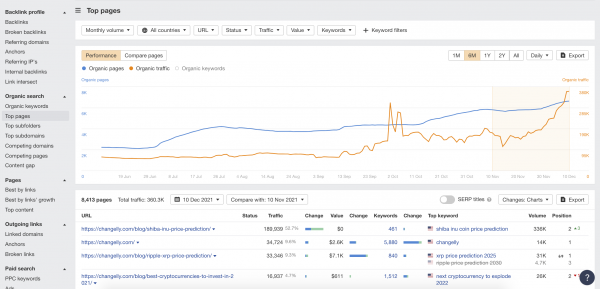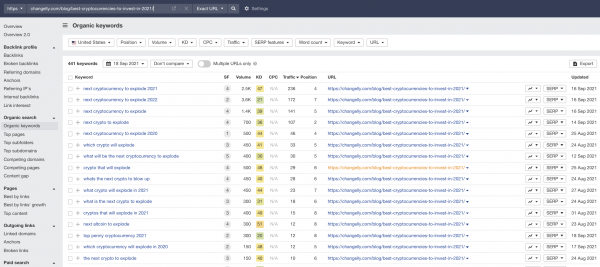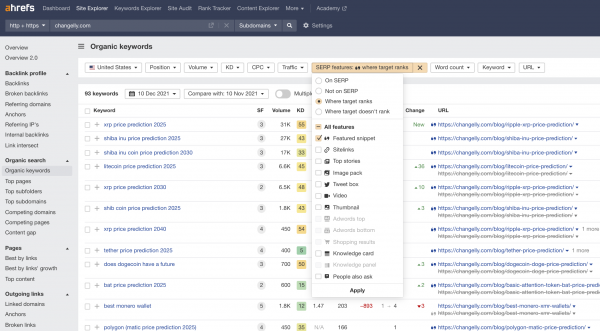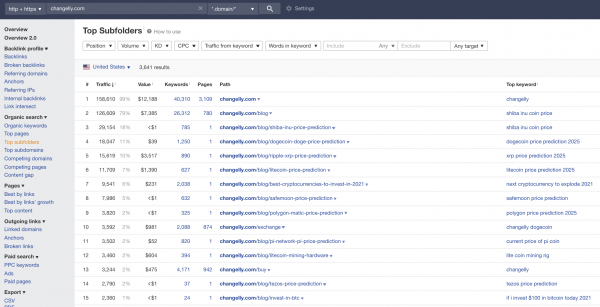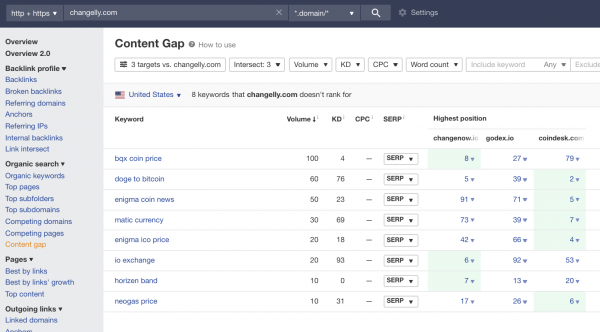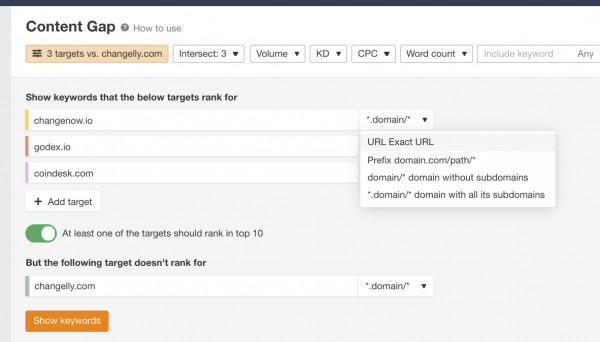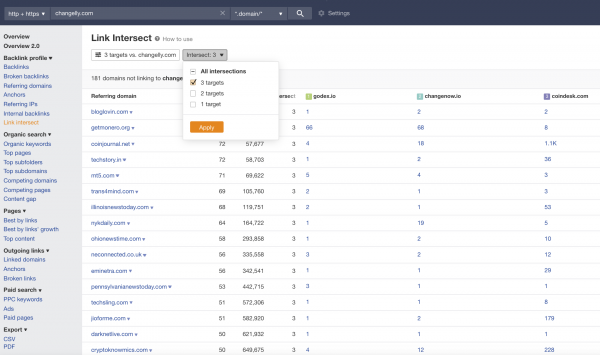What does competitor analysis in terms of SEO?
For those just about to start work on their website, project, or client project, such an analysis will help determine the possible obstacles faced when entering a specific niche, the strengths and weaknesses of competitors, and what kind of content they have. As a result, it will be clear how difficult it is to break into the leaders of the chosen niche, or it is better to give up some ideas altogether.
Such a competent approach is not just a long shot, but a set of content solutions, common themes, and everything else that can be implemented on your website based on what is already working effectively for your competitors.
The process includes the collection of semantics, that is, individual keywords for which the content will be optimized. In addition, link building ideas are collected by looking at competitor profiles and determining where you can get links for your sites.
Benefits of competitor analysis that you can gain:
- keywords and content ideas;
- ideas where to get new links;
- how you can deal with competition and become top in a long-distance run;
- detailed analysis of direct competitors.
What you can learn about a competitor’s site:
- if competitors use SEO, what is their strategy and how it works;
- traffic amount (very approximate using third-party resources);
- best content type and quality pages covered topics, keywords;
- sources of links;
- site structure + internal linking scheme.
How to find competitors for your project?
The most obvious way may look like this: go to Google, enter keywords, and get to know your competitors, but as it turns out, this is not the best way. Instead, you can use such tools:
- Ahrefs Competing Domains
- Google with Ahrefs Toolbar or Keywords Explorer enabled
- Traffic share by domains in Keywords Explorer
Let’s define the roadmap for each tool.
Ahrefs Competing Domains
Since there is an amount of SEO-based competitor analysis guides written by marketers and SEO experts, they all use as an example SEO sites and related vocabulary.
In our article, we decided to use the site of a crypto exchange, for which we will single out the competitive ones using the above tools.
The first thing we should do is enter the site into Ahrefs Competing domains. This reveals to us the sites that overlap with the top 10 keywords from the perspective of maximum overlap percentage. And right away we see several dozen competitor domains that can be investigated further. This is the first place to find competitors.
Google with Ahrefs Toolbar or Keywords Explorer
The next place to find competitors is Keywords Explorer, where you should also type in keywords and look at the results. You can select a country on which the result with metrics will immediately be issued.
In some cases, it would be better to use Google Ahrefs Toolbar enabled. These queries are less expensive, and there will appear a table with combined metrics for the domain and page under each search result. But the most useful thing is that this issue can be exported and in one table you will get a matrix for numerous competitors.
Traffic share by domains in Keywords Explorer
Another method is to use Share traffic from Keyword Explorer.
This tool allows you to analyze a large number of requests at one time. When you are about to enter a niche, then you already have a number of keywords that can be used. You should collect them in a table and immediately enter them into Keyword Explorer and analyze them.
Step-by-step Competitor Websites Analysis
What competitors to check first?
In the competitor websites list pay attention to relatively new websites with good results.
When we observe such a picture, it is very interesting to find out how such results have been achieved.
Does domain age matter for search ranking?
Practice shows that older domains are ranked higher in search engines. As a rule, over the years of their existence, such resources accumulate a lot of information that is indexed by search engines.
Therefore, if competitors with older domains work in the thematic niche, and you have a fledgling resource, then you will have to make up for this by increasing the download speed, content variety, link promotion, etc.
However, just because a domain was registered many years ago doesn’t make it strong:
- All this time, the website might not be indexed, not receive links, traffic and not exist at all.
- The site could change its owner, SEO team, budget, and so on.
- The graph of the growth of the link profile and traffic is much more indicative.
Step 1. General Ahrefs website overview
Organic search tab
One of the most illustrative reports in terms of how serious they are about SEO is the tool shown below.
Step 3. Organic positions in Ahrefs – Organic search tab
It shows the number of keywords depending on the positions. We can see that most of the keywords are at the top. This is a good indicator.
You can see the number of pages by the result in Google, although this is not always accurate information. But just to look at and evaluate a competitor is enough.
Be sure to go to the site itself and check out their design (logo, fonts and color schemes, photos, cover text, widgets, etc.).
Step 4. Content and organic traffic analysis. Top pages report
Let us start with the Top pages report. This tool shows us the pages, top keywords, and the number of keywords that bring us the most traffic. You can add branded keywords directly to your filter so they don’t get in your way.
The top pages report is a filter for categories that can be used for Intent analysis. For example to check the most traffic pages from corporate blogs.
What to look at:
- number of keywords, not just traffic (to assess the overall potential of the topic);
- the number of backlinks (relative to traffic).
As a result, we receive ideas for content with good overall traffic potential (not just good single keyword frequency) that don’t need a lot of backlinks.
You can find additional keywords besides the ones that bring lots of traffic.
Step 5. Keywords count as an indicator of overall traffic potential
Step 6. Check websites
Look at the competitors’ pages and study their successful guides, UI and UX, design, and customer flow. Perhaps you can do something better for your site.
Step 7. Check the competitors’ Featured Snippets
Hint! Use these reports for different purposes:
- Top pages report for analysis at the site/domain level;
- Organic keywords report for the page or category analysis;
- Top Subfolders/Subdomain for structure/section analysis.
The missing semantics
Step 8. Content Gap
You can look at organic keywords to see how they intersect several sites at once. You add your site to the filter so that it does not rank, and start to analyze the sites of competitors. We receive keywords for which three or two of your competitors rank. You’d better use a keyword filter right here.
Step 9. Content Gap Report at the pages or categories level
You can analyze not only websites but even categories and individual pages. To do this, there are a number of separate tools that suggest which keywords are used frequently. You can take your article on this topic and add 3-5-10 articles about your competitors to this report to analyze them. There will be keywords in the search results that can be added to your page since these keywords are already bringing traffic to your competitors.
Backlinks sources in business niche
Step 10. Niche link sources
Similar to the Content Gap Report, you can add 10 websites of your competitors to this report and find sites that link to several competitors at once. You can often find categories here where you can be added absolutely free.
When we turn to an individual analysis of backlinks, the first thing we pay attention to is the graphs of the Referring Domains growth, but this indicates more the amount of effort expended than the result.
Don’t start with Backlinks or Referring Domains, but rather go to the Best by Links report.
Step 11. Best by Links are the pages with the highest number of referring domains.
Although these pages may not always be high-traffic.
You can also look at the report called Best by Links’ Growth, where you will find the pages with the best link growth. This is either fresh content or pages that people have been referring to recently.
Advice:
- Use Backlinks report at the page level
- At the site or domain level: use reports Best by links, Best by links’ growth, Referring Domains
Technical analysis of competitor’s website
What should you check?
- Page load time
- How mobile-friendly the website is
- Simple on-page SEO mistakes
First of all, any page of the site needs to be viewed by the load time, as this is one of the ranking factors for Google now.
Using the Mobile-Friendly Test tool, you can see how friendly the page is to mobile devices. This is necessary since a large percentage of traffic comes from mobile devices. You can add a competitor’s site to Ahrefs Site Audit to see if there are simple SEO mistakes.
So that the work done is not wasted, at the last stage, it is necessary to bring together all the data. That is why you need to enter the results in a special table (enter the site and its main metrics). The last stage will be to analyze the data obtained and draw conclusions about your place among the rest of your industry.
This type of SEO research allows you to discover all the strengths and weaknesses of your competitors, compare them with your own strategy, and understand what you are doing wrong and how to fix it.
In fact, such a strategy is a specific guide to action that will help you find the answer to the question: what to do to get ahead of the competition?

